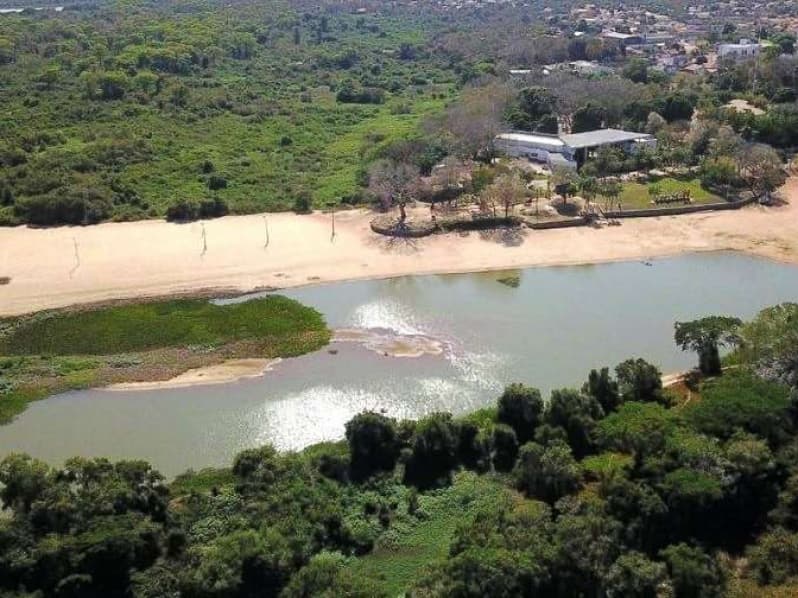The river ships and the railways that supply them have had to drastically lower their load
For the second consecutive year, the water levels in the Tamengo Canal and the Paraguay River dropped drastically due to the drought that affects almost all of South America, hindering the normal transit of barges that enter Bolivian ports from the Paraguay-Paraná Waterway through the Tamengo Channel, reported El Deber .
According to data from the Paraguayan Directorate of Meteorology and Hydrology, a few kilometers from the Bolivian border, in the Brazilian port of Ladário, on the Paraguay River, the water level reached only 0.58 meters on Sunday, August 15. The most critical points are in Paraguayan territory, with the lowest levels recorded in the towns of Río Aguaray (0.04 m) and Naranjahai Villeta (0.29 m).
The Santa Cruz Chamber of Exporters (Cadex) indicated that, for the second year, due to cyclical climatic phenomena, the Tamengo Canal, as well as the rest of the Paraguay – Paraná Waterway, is suffering a decrease in water levels: “This This situation makes it necessary to put draft restrictions to prevent vessels from running aground at critical steps. A recovery in water levels is expected by the end of this year and this situation will not be repeated until the next low water cycle. “
Due to these restrictions, Cadex revealed that export cargo is being diverted, depending on its final destination, to Pacific ports or, if the transfer to Hidrovía ports is maintained, it is sent by land with the difficulties in the border crossings and additional costs.
Railways with minimum load
The pandemic and climate change have also affected the operations of the Bolivian railways, despite making investments of about US $ 200 million in recent years. One of the reasons is that freight to the border with Brazil fell considerably because the barges that receive soybeans -and its derivatives- and urea, mainly, carry the minimum load, due to the low level of the waters in the river. Paraguay.
The External Relations Management of Ferroviaria Oriental (FO) reported that the highest volume of cargo occurred in 2018, when the company transported 2.24 million tons, becoming a record in the history of the Eastern Network of Bolivia. However, in 2020, volumes decreased to 1.37 million tonnes.
“In 2021, the effects of the sanitary crisis still continue, as well as the low levels of water in the waterway, to which is added the situation of forest fires in Chiquitania. However, a slight recovery in transport is estimated of cargo, hoping to transport 1.7 million tons, “FO said.
Despite the obstacles, the railway companies continue to bet on the transport of Bolivian production, and imports of products for the industry. Ferroviaria Oriental, for example, highlighted that, in the last 10 years, since the arrival of businessman Carlos Gill as the main shareholder, the company has executed an aggressive investment plan of US $ 155.4 million, aimed at increasing its transportation capacity, improve infrastructure, venture into comprehensive logistics, manage international ports and terminals in other countries, build cargo transfer centers and distribution centers, among others.
In this sense, it has incorporated 10 state-of-the-art locomotives and 500 wagons, with the aim of accompanying national projects that generate large volumes of cargo; such as the Yacuses cement plant and the YPFB urea plant. “Likewise, the transport capacity of the railway is geared towards other large projects such as; the development of Mutún and Puerto Busch, as well as the Bioceanic Integration Railway Corridor, with significant international cargo volumes, ”said FO.
Ferroviaria Andina, for its part, highlighted that since 2016, it has promoted an intensive investment plan that amounted to US $ 38 million, which included the purchase of three state-of-the-art Stadler locomotives, specially built to operate at heights and on the slopes of the highland roads. “The company will continue with this investment plan, as well as the execution of new projects,” added Cynthia Aramayo, mentioning that in May an operational test was carried out on the Arica-La Paz section, for which the economic feasibility is being assessed. of that corridor.
Indeed, in May, leaders of the Bolivian heavy transport prevented the tests of the Arica-La Paz railway, considering it a competition.
(August 12, 2021)
Barge entry to Bolivian ports is diminished by low flow in the Tamengo Canal and the Paraguay River
Mundo Maritimo
https://www.mundomaritimo.cl/noticias/ingreso-de-barcazas-a-los-puertos-de-bolivia-se-ve-disminuido-por-bajo-caudal-en-el-canal-tamengo-y-el-rio-paraguay




